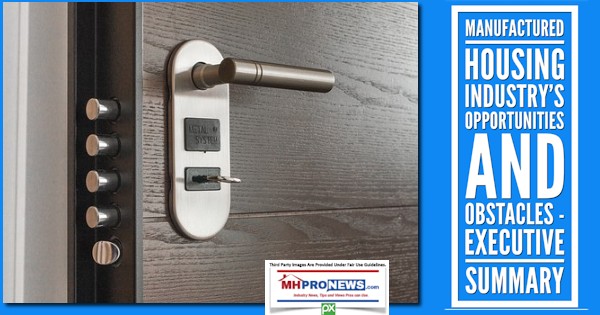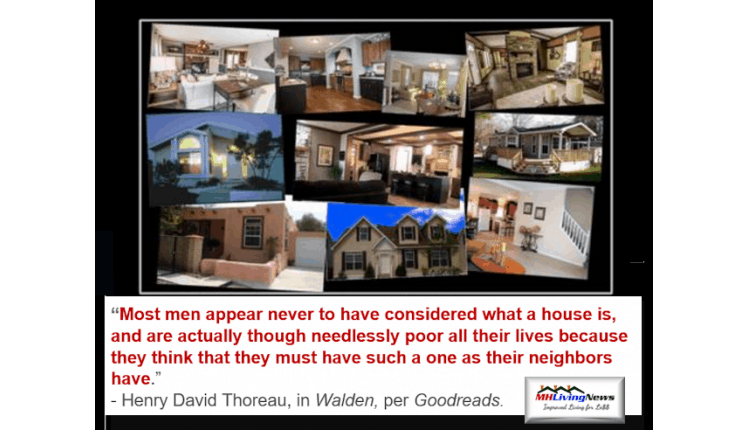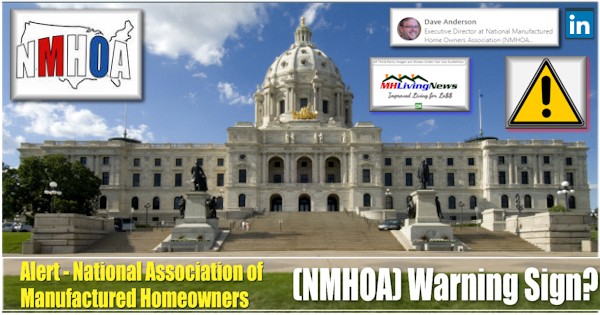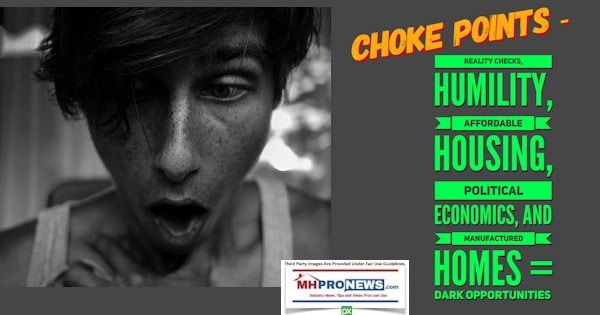
The headline asks an apt question. Have recent events opened new opportunities in Manufactured Housing for business, investors, and affordable home seekers?
The short answer is “yes.”
The reasons for that answer our outlined in the executive summary report linked below, with more details linked here.

Let’s sum it up, from a business perspective, while encouraging readers to take the deeper dive in linked reports.
· A variety of firms and organization that have dominated manufactured housing in recent years may be heading into more turbulent waters. One of several examples is spotlighted in the video below. Note that Democratic Senators, several of whom are 2020 presidential hopefuls, have since signed onto calls for more federal investigations.
· Apart from that, there are estimates that over 8 million housing units needed in America today, with the National Low Income Housing Coalition estimating that it would be some 7 million affordable housing units needed right now. Those needs are opportunities in disguise.
>>> If only 1 in 4 of those 8 million needs units were built by HUD Code manufactured home producers, at an average price of $78,900 reported by the U.S. Census Bureau in July 2019, that would be $157,800,000,000 in new construction. Apply the net profits that represents to retailers, producers and others and the opportunities are huge.
· Additionally, Americans are upsizing, downsizing, and moving. As more Americans understand the real appeal and value of a modern manufactured home, the developments outlined in the report linked above points to billions of dollars annually in new opportunities.

The Manufactured Housing Institute (MHI) and the Manufactured Housing Association for Regulatory Reform (MHARR) at times seem to take very similar positions. But upon closer examination, what MHI claims to be proposing or promoting is missing from their own website. By contrast, what MHARR says they want to accomplish is freely available on their website. That begs the question, why does MHI say the support X, but often seemingly fail to connect the dots that would make X more likely to be done?
Some examples are
- enhanced preemption,
- the DOE energy rule proposal,
- or how to deal with Pamela Beck Danner, JD, while she was working at HUD and more. For a deeper dive on one of those topics, see the article linked below.
But despite the decline, the opportunities are real. How big is the potential? The infographic below sheds light on that topic.

To learn more about other related political topics and how that impacts manufactured housing, see the related reports beyond the byline and notices on this lengthy installment of “News through the lens of manufactured homes and factory-built housing,,” © where “We Provide, You Decide.” © ## (News, analysis, and commentary.)

Soheyla is a managing member of LifeStyle Factory Homes, LLC, the parent company to MHProNews, and MHLivingNews.com. Connect with us on LinkedIn here and here.
Related Reports:
Click the image/text box below to access relevant, related information.



























